Salt Palms
Roberta Stoddart
Oil on Primed hardboard on wooden stretcher bar
10 x 7 1/2″
2022
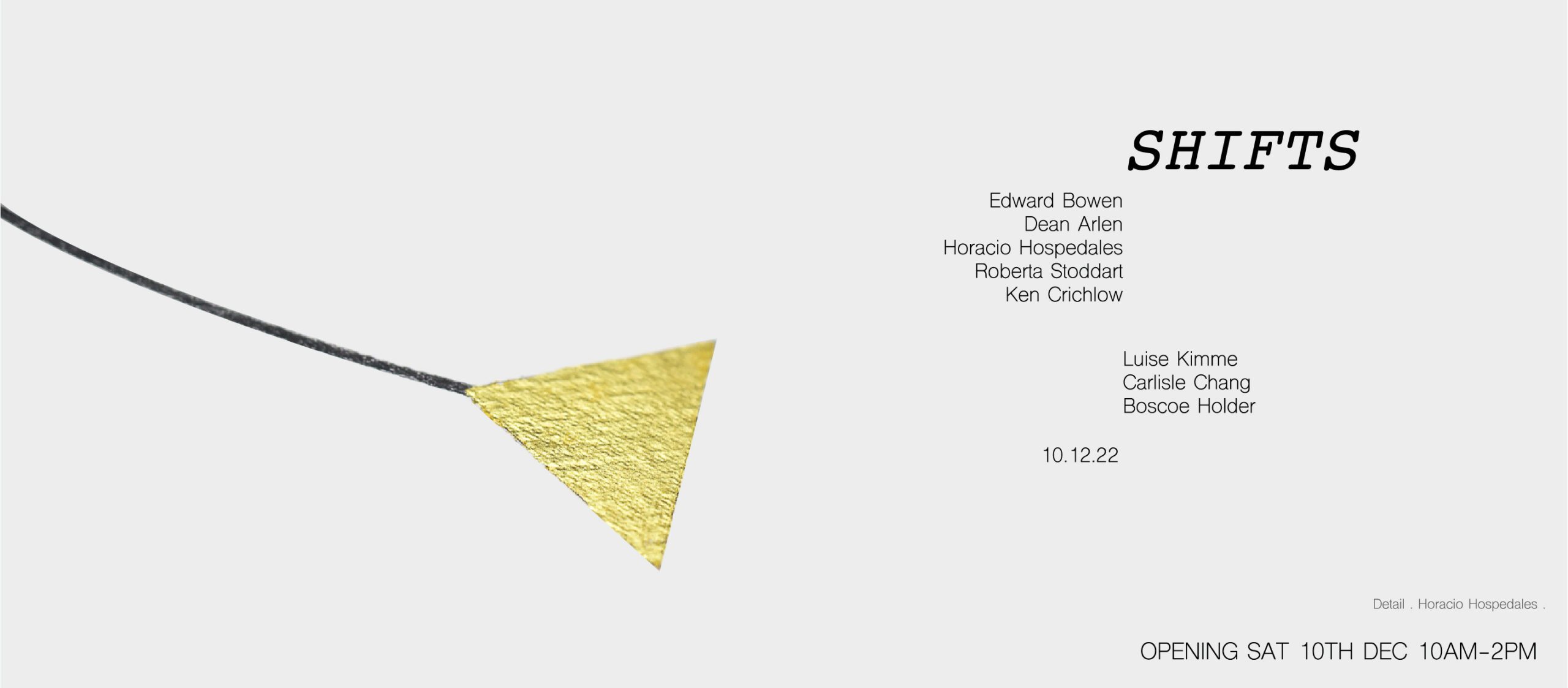
Roberta Stoddart
Oil on Primed hardboard on wooden stretcher bar
10 x 7 1/2″
2022
Kenywyn Crichlow is a practicing artist who has participated in solo exhibitions in Trinidad and Tobago and internationally from 1981 to present. Mr. Crichlow has taught at every level of the Education system in Trinidad and Tobago; primary and secondary schools, Teachers College and at the University of the West Indies. Kenwyn is also a key researcher on the history of visual arts in the Caribbean.
His paintings explore narratives of our culture and identity through vibrant, colourful compositions.
They seek to capture the full range of our experiences, and open us to the images that reside deep in the heart.
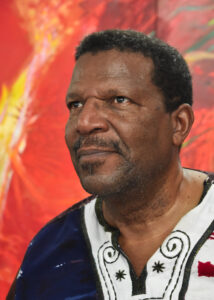
Horacio Hospedales is a Trinidad-born multi-media artist who has been practicing for twenty-five years. While exhibiting his fine art in Manhattan, he became a muralist and decorative painter working mainly on exclusive homes throughout New York, Connecticut and New Jersey in the USA. There was a break in his creative career when he returned to Trinidad in 2004 for family obligations but has returned to making since 2013.
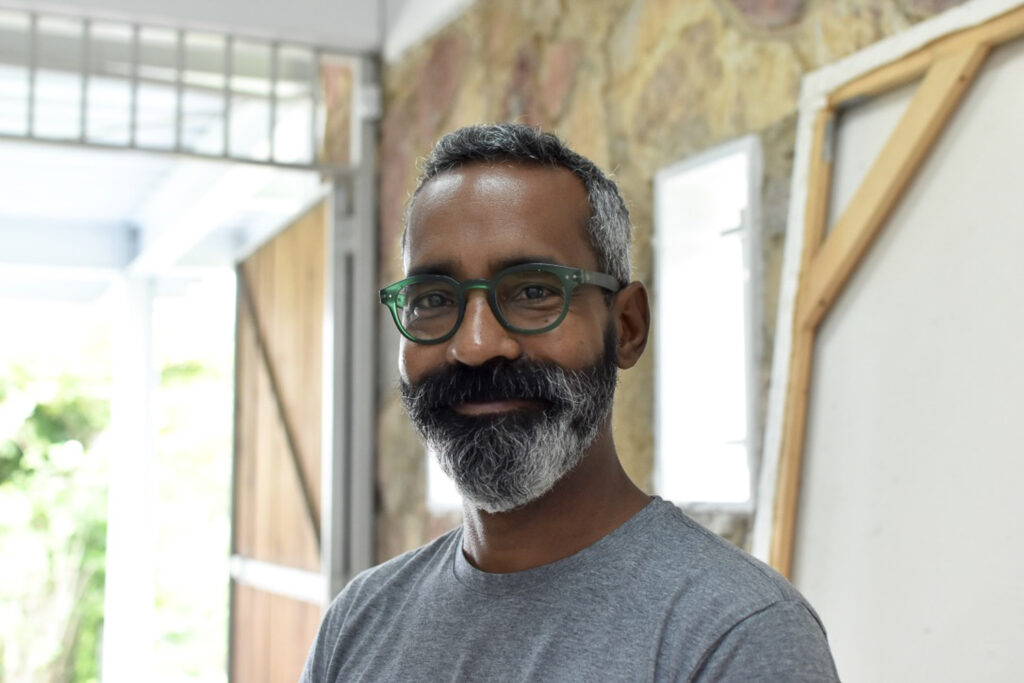
Born 1963, Eddie Bowen studied at Croydon College, UK from 1981-1985. He has since been living and working in Trinidad, often letting his environment in San Souci, be his muse.
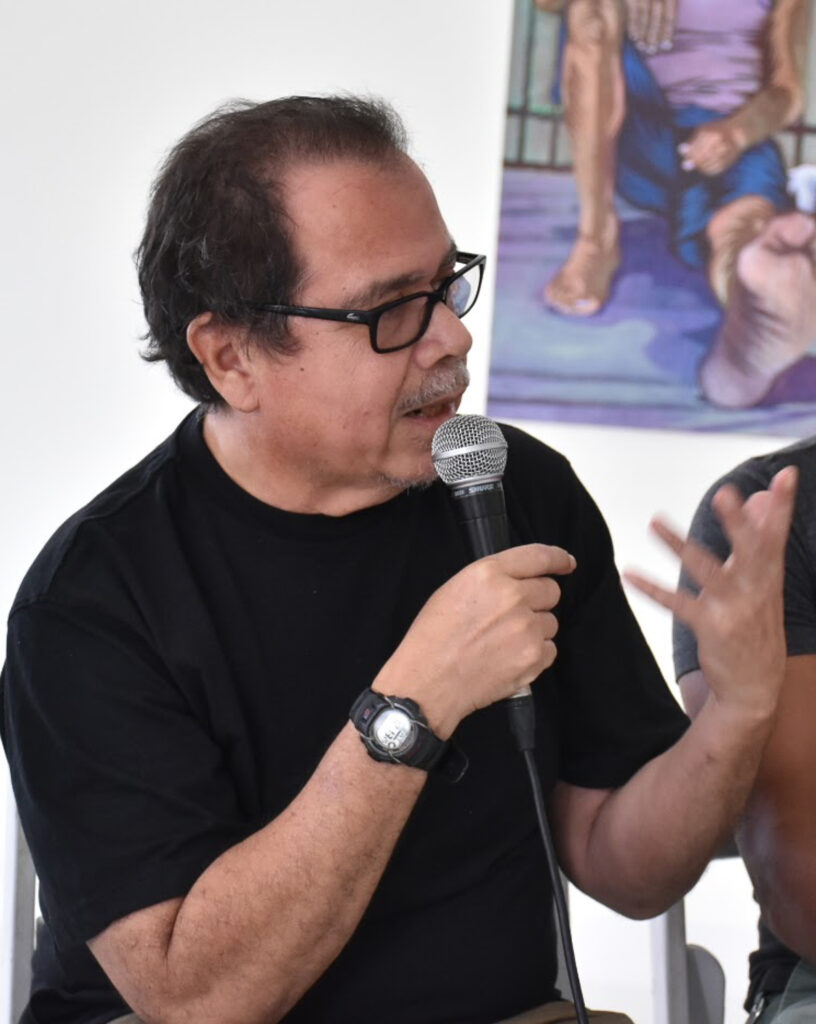
“My perception of visual art has evolved towards a performative act-tion within the political socio-economic life of the urban, the rural. A kind of schizophrenia within aesthetics, as I rethink the value of the studio and how the practice engages its space. There is a conscious consideration of art for tomorrow” – Dean Arlen
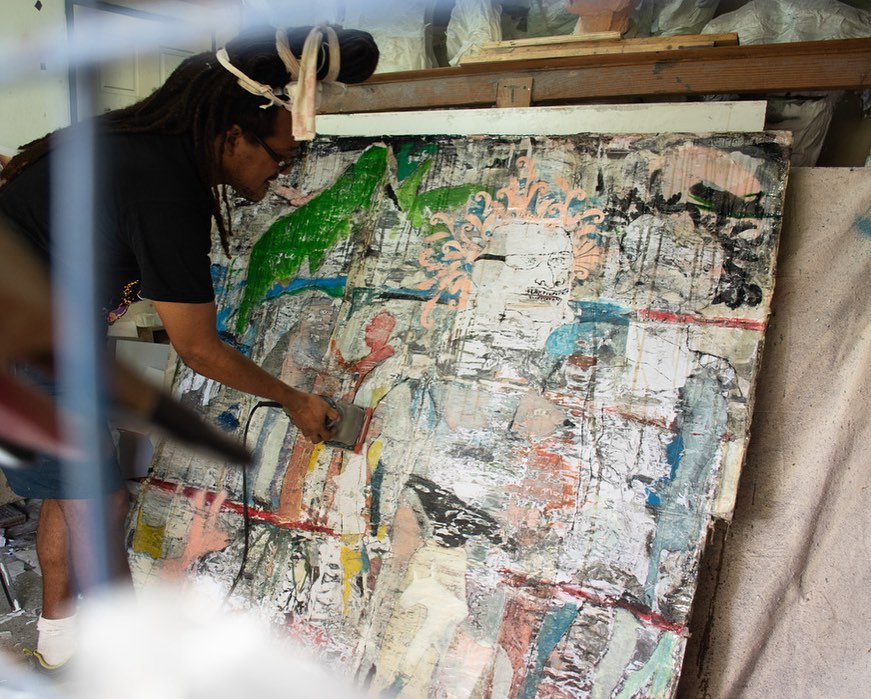
Roberta Stoddart is an artist whose paintings have been described as brave, dense, bold, thoroughly executed, and deeply felt. They are not pleasant, pretty paintings. Intense and disturbing, they stimulate questions about our collective prejudices, our psychological spaces, and our notions of belonging. Stoddart has published two books, Seamless Spaces (2000) and The Storyteller (2007). She has produced seven solo exhibitions, and has participated in important local, regional, and international group shows. She is the recipient of a Peoples’ Choice prize in France and has exhibited at the Werner Gallery, Berlin, Germany. Her paintings are published in numerous magazines, art catalogues and journals. Born in Jamaica, she lives and works in Trinidad.
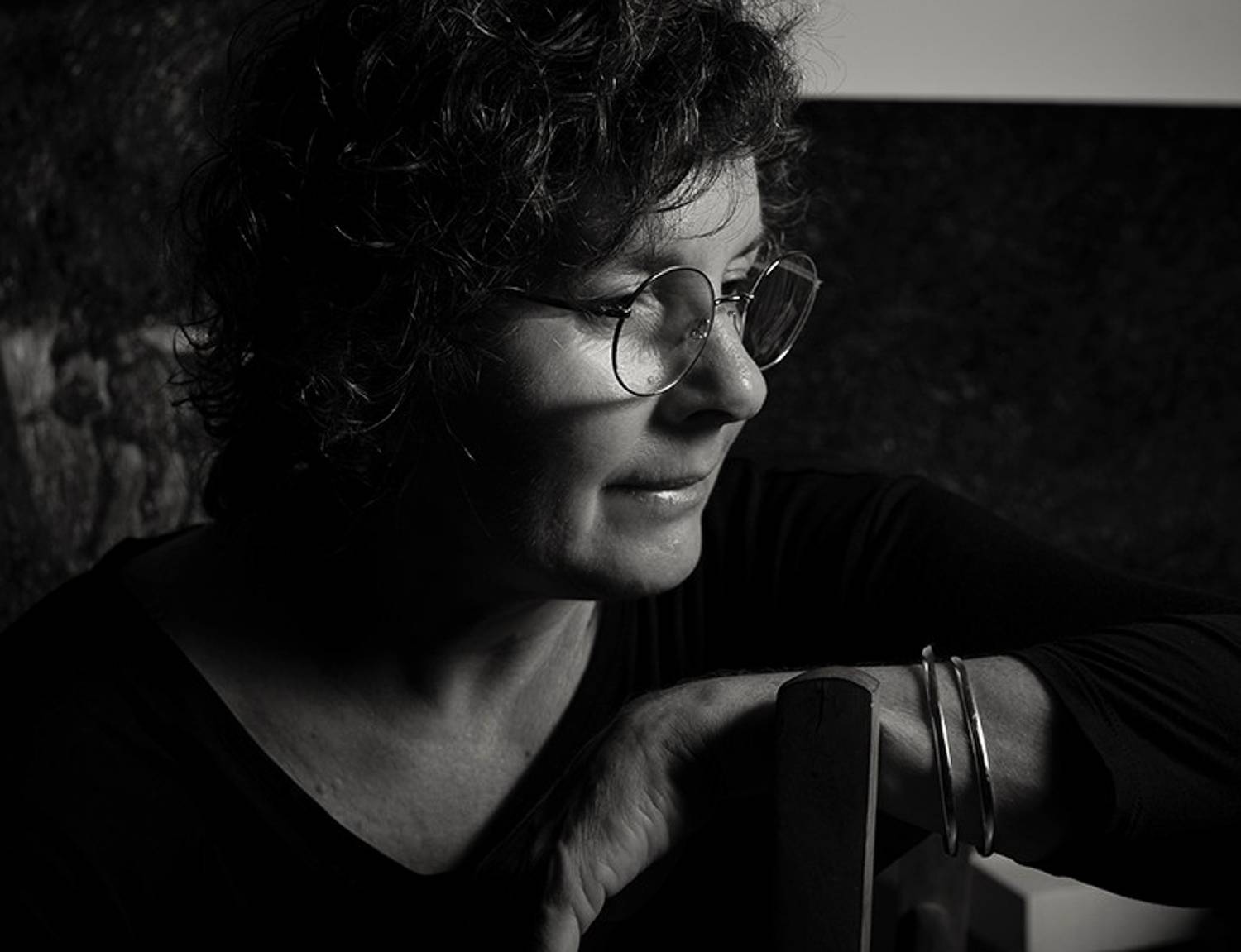
Boscoe Holder (16 July 1921 – 21 April 2007) was born Arthur Aldwyn Holder in Trinidad and Tobago. He started painting from as early as five, and was also an accomplished pianist at just nine years old. He visited New York and Martinique in the 1940s and was exposed to experiences promoting his black consciousness which he used in his various art forms. He had a celebrated international career spanning six decades as a designer and visual artist, dancer, choreographer and musician. He is considered one of the top painters from the Caribbean whose work is in many collections around the world, particularly recognisable for his paintings of people of colour, reflecting his appreciation of Caribbean people and culture. He often used his dancers as models, his “favourite” being his wife Sheila who was also lead dancer in his company.
Living in London, England, during the 1950s and 1960s, Boscoe Holder has been credited with introducing limbo dancing and steel-pan playing to Britain.
In 1973, in recognition of Boscoe Holder’s contribution to the Arts, the government of Trinidad and Tobago awarded him the Hummingbird Medal (gold) and named a street after him.
In 1978 the Venezuelan government presented him with the Francisco De Miranda award.Then-Mayor of Washington DC declared 22 May 1983 as Boscoe Holder and Geoffrey Holder Day, in recognition of the brothers’ contribution to the arts. On 7 April 1991, Boscoe Holder, his son Christian, and brother Geoffrey received, in Philadelphia, the first Drexel University Award for International Excellence.
On 31 October 2003, Boscoe Holder was awarded an Honorary Degree of Doctor of Letters (DLitt) by the University of the West Indies. In December 2004 the government of Trinidad and Tobago issued an official Christmas series of postage stamps featuring six of Holder’s paintings. Holder’s work was included in a 2010 exhibition in Berlin curated by Peter Doig and Hilton Als.
Boscoe Holder’s paintings can be found in many collections around the world.
Carlisle Chang was born on the 21st of April 1921 near the Croisee, the bustling cross roads in San Juan, Trinidad. His early art education included a correspondence course from the Washington School of Art, a two year study program under Amy Leong-Pang and a Master’s certificate from the New York Institute of Photography. A British Council Scholarship in 1950 enabled him to study poetry, painting and mural painting at the L.C.C. Central School of Arts and Crafts, London where he received the diploma in 1953 and won an Italian Government Scholarship to the Instituto Statale d’Arte for Ceramics in Faenza.
Chang returned to Trinidad in 1954 and opened his painting studio in Port of Spain the following year. The ensuing two decades were his most productive with more than ten murals in a variety of media, costume and sets for theatre and ballet, concepts and design for more than twelve years of Carnival and easel painting in water-colours and oils. His paintings were sought by collectors, both local and overseas and selected by curators for showings in Europe, the United States and South America. He holds the citation from the Press Club of Lausanne and is the only West Indian artist ever to have received the medal of the Bienal de Sao Paulo, Brazil.
In 1970 in the wake of social change, which brought to a halt all initiatives in art, Chang turned to handicraft as a means of inoculating craft techniques to workers including the physically impaired. He started Gayapa Industries Limited producing collectors’ dolls, embroidered hangings, copper repousse and carved wood items; creating designs from local folklore and popular culture. Official policy on handicraft proved unreliable and ambivalent, however, and the handicraft thrust faltered within the decade.
The artist started anew as an interior designer and numbered among his projects the Seetaram House, Santa Margarita, the Nigerian High Commission, and eight branches for the Worker’s Bank of Trinidad and Tobago, which collapsed in 1987.
Chang served as President of the Trinidad Art Society for Five years and finally faced the prospect of having to jump-start his career afresh after 1990. The 1997 CLICO calendar was a welcome catalyst and the current exhibition represents both a return to painting and a renewal which will be applauded by patrons of art. In these latest offerings the artist reaches into recollections of an earlier, more graceful time and images that emerge out of the folk culture. If there are discernible references here they may be redolent of the work of Hugh Stollmeyer, and sometimes visions reminiscent of Ruffino Tamayo.